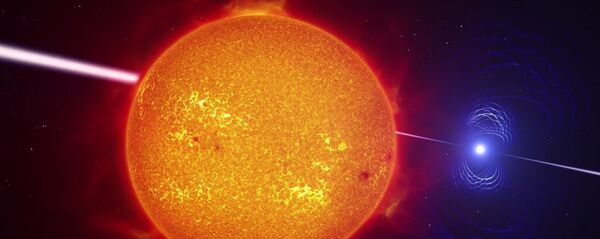"Just after the star came around the sun last year, we started looking at it through the Krizmanich Telescope, and we were shocked to see it was seven times fainter than it had ever been before," said Colin Littlefield, a member of a team of University of Notre Dame astrophysicists led by Professor Peter Garnavich who observed the unexplained fading of an interacting binary star, one of the first discoveries using the University's Sarah L. Krizmanich Telescope.
"The dimming is a sign that the donating star stopped sending matter to the compact dwarf, and it's unclear why. Although the star is becoming brighter again, the recovery to normal brightness has been slow, taking over six months to get back to where it was when Kepler [telescope] observed," he added.
The binary star, FO Aquarii, located in the Milky Way galaxy and Aquarius constellation, consists of a pair of big white dwarfs and several small “normal” stars, which rotate close to one another donating gas to the compact dwarf.
Being just 500 light years away from Earth, FO Aquarii is one of the stars closest to our planet.
In 2014 the Kepler spacel telescope zoomed in on the area of Aquarius constellation where FO Aquarii is giving scientists a chance to measure the star’s brilliance and other astrophysical characteristics.
When FO Aquarii came out from behind the Sun in 2016 the scientists were surprised to see that its brightness had dimmed seven times which is something they had never observed happening to binary stars before.
Moreover, the star was now blinking. Instead of a steady 20 minutes between flashes, sometimes there was an 11-minute signal and at other times a 21-minute pulse.
The strong magnetic field generated by this spot could have slowed down the flow of hydrogen from the donating star thus making the white dwarf look dimmer.
But that doesn't explain why the star hasn't then recovered as quickly as it dimmed. This is why FO Aquarii falls into the category of mystery stars, just like the “aliens’ star” KIC 8462852 and other heavenly bodies whose behavior modern science still can’t explain.
Never miss a story again — sign up to our Telegram channel and we'll keep you up to speed!




